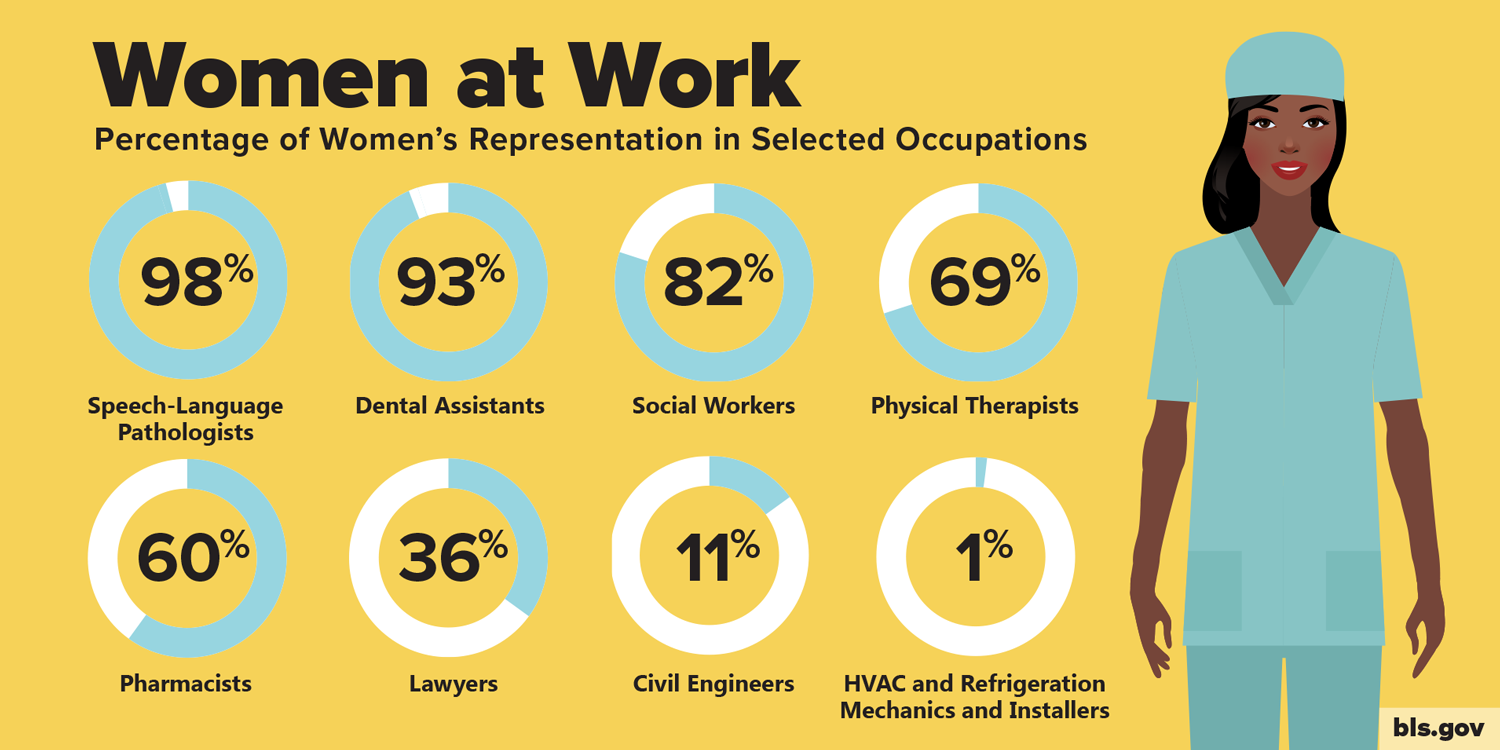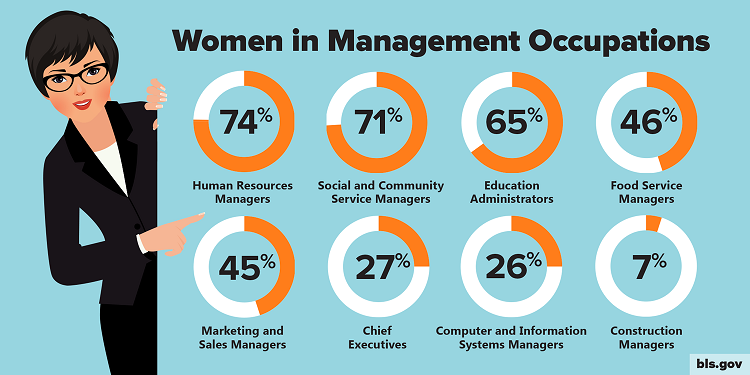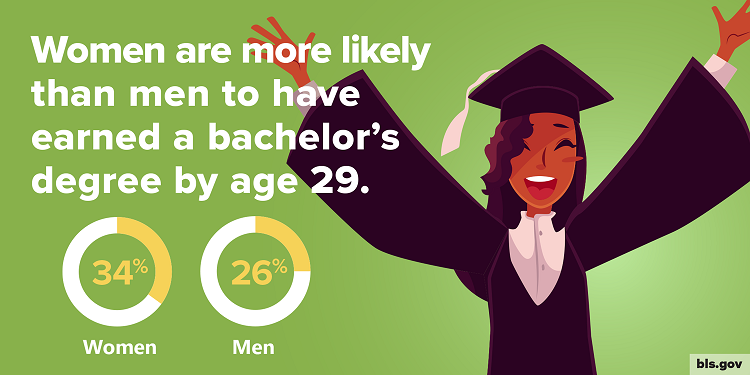Editor’s note: The following has been cross-posted from the U.S. Department of Labor blog. The writer is Mark DeWolf, an economist in the U.S. Department of Labor’s Women’s Bureau.

Editor’s note: A text-only version of the graphic is below.
This Women’s History Month, we’re taking a look at women’s contributions to the U.S. labor force. Here are some noteworthy statistics we’ve rounded up!
Women are Integral to Today’s Workforce
- There are 74.6 million women in the civilian labor force.
- Almost 47 percent of U.S. workers are women.
- More than 39 percent of women work in occupations where women make up at least three-quarters of the workforce.
- Women own close to 10 million businesses, accounting for $1.4 trillion in receipts.
- Female veterans tend to continue their service in the labor force: About 3 out of 10 serve their country as government workers.

Editor’s note: A text-only version of the graphic is below.
Working Moms are the Norm
- Seventy percent of mothers with children under 18 participate in the labor force, with over 75 percent employed full-time.
- Mothers are the primary or sole earners for 40 percent of households with children under 18 today, compared with 11 percent in 1960.

Trends in Women’s Employment Have Evolved over Time
- Women’s participation in the U.S. labor force has climbed since World War II: from 32.7 percent in 1948 to 56.8 percent in 2016.
- The proportion of women with college degrees in the labor force has almost quadrupled since 1970. More than 40 percent of women in the labor force had college degrees in 2016, compared with 11 percent in 1970.
- The range of occupations women workers hold has also expanded, with women making notable gains in professional and managerial occupations. In 2016, more than one in three lawyers was a woman, compared to fewer than 1 in 10 in 1974.
- Despite these gains, women are still underrepresented in STEM occupations, with women’s share of computer workers actually declining since 1990.
- The unemployment rate for women was 4.8 percent in January 2017, down from a peak of 9.0 percent in November 2010. (Source)
Since 1920, the Women’s Bureau has been working to address the challenges and barriers unique to women in the labor force, and data from BLS and other sources plays an important role in helping us understand those challenges. For more of the latest stats on working women, be sure to check out the Women’s Bureau’s data and statistics page. You may also like the BLS report Highlights of Women’s Earnings in 2015 and a BLS webpage with links to more data about women.
Women at Work: Percentage of Women’s Representation in Selected Occupations
| Speech-language pathologists | 98% |
| Dental assistants | 93% |
| Social workers | 82% |
| Physical therapists | 69% |
| Pharmacists | 60% |
| Lawyers | 36% |
| Civil engineers | 11% |
| HVAC and refrigeration mechanics and installers | 1% |
Women in Management Occupations
| Human resources managers | 74% |
| Social and community service managers | 71% |
| Education administrators | 65% |
| Food service managers | 46% |
| Marketing and sales managers | 45% |
| Chief executives | 27% |
| Computer and information systems managers | 26% |
| Construction managers | 7% |
 United States Department of Labor
United States Department of Labor